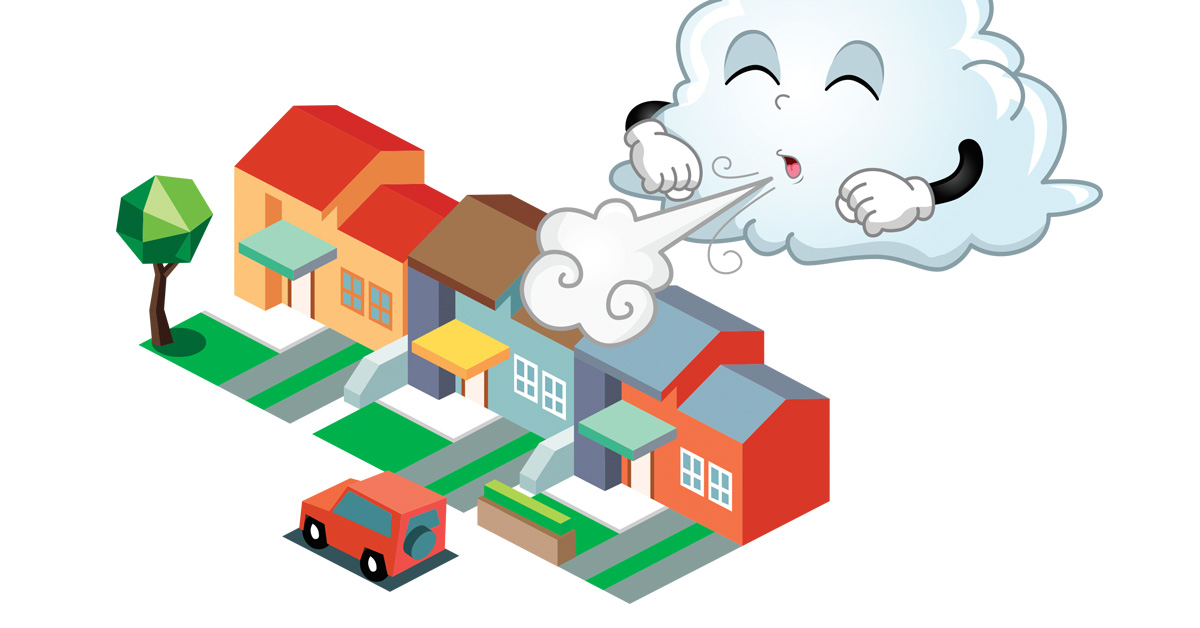Homes are at the heart of every community. Where there are homes, there are people, families, relationships and support systems. Over the past few decades, however, many areas of the country have struggled with a lack of investment in housing, which has resulted in a deterioration of their vibrant social fabrics and has often triggered an exodus of community members.
Although the dynamics of America’s underserved communities are complex, one tried and true way to uplift and revitalize neighborhoods is by investing in and improving homes. Local real estate investors are often best positioned to pursue these opportunities. Their boots-on-the-ground perspective provides an ability to see the potential in a renovation project and its impact on the community.
“Building new housing stock is important, but housing supply is most needed at the lower end of the cost spectrum, in communities with little economic incentive to encourage new development.”
Let’s take a closer look at the benefits of residential real estate revitalization and how local investors can create opportunities for their own communities to flourish. Mortgage originators can be the bridge to assist investors in improving these communities.
Dividing line
Community deterioration has been well studied. Ill-intentioned public and private policies, often racially fueled, have served to extract community resources and concentrate poverty. For example, almost every distressed urban area in the U.S. has had a highway built through it at some point, quite literally creating a divide through the community, according to the nonprofit organization Purpose Built Communities.
Many of these projects specifically served to isolate and resegregate minority communities in many major cities across the country, including New York, Atlanta and Minneapolis. The effect of these actions is almost always the same: People who can afford to move away leave the area, resources and jobs follow, and the community suffers.
Residential real estate investment is a tool that, when used properly, can revive and strengthen communities. Investing in residential properties — particularly through the rehabilitation of dilapidated homes and land sites — heals communities from the inside by attracting new residents, diversifying socioeconomic demographics, and ultimately attracting jobs and community resources. This approach also has the potential to create generational wealth for the investors who are helping these communities.
Research from the Center for Community Health and Development at the University of Kansas found that improving the quality of housing increases neighborhood pride, leading to a reduction in crime, violence, vandalism and other social challenges. Residential real estate investment also encourages other types of community and commercial developments, thereby increasing city tax revenues and personal property values.
Housing disrepair
In addition to the rise in distressed communities, the nation is also suffering from a severe housing shortage. Recent research from the National Multifamily Housing Council suggests that the U.S. has a shortage of 600,000 apartment units and needs to build 4.3 million new apartments by 2035 to meet current demand.
The single-family home construction industry is nowhere close to meeting its goal either. A recent report from Realtor.com estimated that the nation has a shortfall of 6.5 million single-family homes. About 1 million single-family starts occurred in 2022, down 10.6% from the prior year.
What’s missing from these statistics is the allocation of housing. Building new housing stock is important, but housing supply is most needed at the lower end of the cost spectrum, in communities with little economic incentive to encourage new development. In these communities, functional housing obsolescence — a term used to describe homes that do not align with buyers’ needs and wants — has been on the rise for more than a decade.
Investment in existing residential properties — rather than in new developments — is a cure for this problem. Investors can breathe new life into outdated and obsolete homes. There are opportunities to repurpose unwanted housing stock and make it appealing to a new generation of homeowners. This type of residential investment actually increases supply and provides relief to the housing shortage at the lowest end of the cost spectrum.
So, why don’t more older existing homes attract investment? There’s not one simple answer, but one common challenge is that local investors often lack access to capital.
Meaningful change
The biggest challenge to supporting residential investment in underserved communities isn’t a lack of opportunity or desire — it is a lack of capital. Local investors may have the capability and inclination to invest in residential housing projects that could catalyze community growth and development, but they often don’t have the means to fund these projects.
National and regional banks are typically too risk averse to fund residential revitalization loans. Local investors don’t have the same access to the capital markets as large institutions. The good news is, capital is out there, but it might not be available through a local bank branch. Technology-enabled private lenders are filling the funding gap and democratizing investment capital for small and scaling investors.
Using a robust pool of data that focuses on the subject property and housing demand, rather than the singular credit of the borrower, makes it possible to underwrite properties and borrowers in a way that removes the traditional barriers to securing investment capital. A faster and more transparent application process means that borrowers who might not otherwise be able to secure a loan can pursue their goal of investing in real estate — and revitalize their communities while doing so.
Technology-enabled lenders are also diversifying investor pools and offering residents of the same neighborhoods that need revitalization an opportunity to build wealth. These loans have a meaningful impact on borrowers’ lives by creating opportunities that traditionally have only been available to a select segment of the market. For many prospective real estate investors, the ability to access capital and pursue promising career opportunities can be life changing.
It is clear that reserving capital exclusively for established investors is not a solution to the current housing crisis. Investment in residential real estate has the potential to truly address some of the nation’s deepest problems. By improving access to capital through technology and data-enabled lending, a new generation of real estate investors can pursue opportunities that create meaningful change for themselves and their communities — one property at a time. ●
Author
-

Arvind Mohan is CEO and a board member at Kiavi, one of the nation’s largest private lenders for residential real estate investors. He has more than 15 years of experience in residential real estate and investment banking. Previously, Mohan was a director in the fixed-income division at Barclays. Mohan recently purchased his first investment property (a small fixer-upper) and learned firsthand the difficulties faced by real estate investors.





